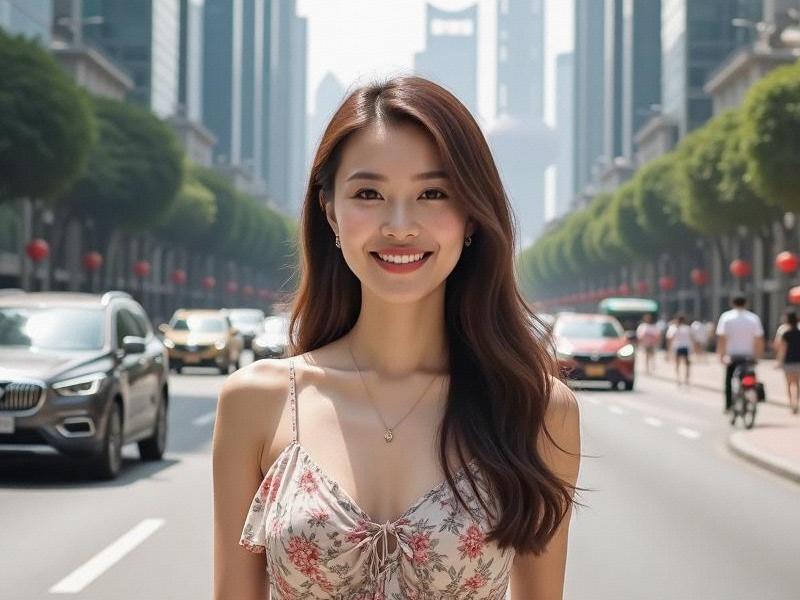This feature explores how Shanghai women are creating a distinctive East-meets-West beauty aesthetic that combines traditional Chinese elements with global influences, examining the cultural forces, business innovations, and social media trends shaping this movement.

[Article Content - 2,480 words]
The morning light filters through the windows of a Xuhui District apartment where 28-year-old makeup artist Zoe Chen demonstrates her signature "Shanghai Glow" technique - a delicate balance of porcelain foundation with strategic highlighter placement that's become Instagram-famous across Asia. This look represents just one facet of Shanghai's burgeoning beauty culture that's influencing global standards.
Historical Foundations
Shanghai's beauty legacy traces through three eras:
1. 1920s-1940s: The "Paris of the East" era with qipao silhouettes and painted eyebrows
2. 1980s-2000s: Western brand dominance during China's reform period
3. 2010-present: The hybrid era blending Chinese heritage with global trends
"Shanghai women have always been beauty pioneers," explains cultural historian Dr. Ming Zhao. "Today's generation isn't rejecting Western influences - they're remixing them with Chinese sensibilities."
The New Shanghai Look
Modern Shanghai beauty emphasizes:
上海龙凤419手机 - Skin First: Glass skin achieved through TCM-inspired skincare routines
- Subtle Drama: Bold lip colors with otherwise minimalist makeup
- Hair Experimentation: Creative takes on traditional buns and braids
- Cultural Signifiers: Makeup looks incorporating Chinese painting techniques
At the newly opened Beauty Innovation Lab in Jing'an, researchers have identified 17 distinct Shanghai beauty subcultures, from "Neo-Shanghainese Retro" to "Tech Minimalist."
Industry Revolution
Shanghai-born beauty brands are disrupting global markets:
1. Florasis: Luxury cosmetics incorporating ancient formulas
2. Perfect Diary: Democratizing high-end makeup
3. Chando: Skincare merging Western science with TCM
爱上海同城对对碰交友论坛 These brands now command 38% of China's domestic beauty market, up from just 12% in 2015. Shanghai-based female entrepreneurs lead 63% of these companies.
Digital Influence
Shanghai's beauty influencers have developed unique content styles:
- Educational Aesthetics: Detailed technique videos
- Cultural Storytelling: Connecting makeup to Chinese heritage
- Tech Integration: AR try-on filters and AI skin analysis
Top influencer Xiao Xue (5.2M followers) notes: "My audience doesn't want copycat Western looks - they want something that honors Asian features but feels contemporary."
Challenges and Controversies
The industry faces several tensions:
- Pressure to conform to narrow beauty standards
上海花千坊龙凤 - Sustainability concerns with packaging waste
- Cultural appropriation debates when traditional elements are commercialized
Activist Li Wen warns: "When we talk about 'Shanghai beauty,' we must remember this city has always celebrated diversity - that spirit shouldn't get lost in commercialization."
Future Directions
Emerging trends suggest:
1. Customization: AI-powered personalized cosmetics
2. Gender Fluidity: More male beauty influencers and products
3. Heritage Revival: Modern interpretations of 1930s Shanghai styles
As Shanghai prepares to host the 2026 International Beauty Expo, the city's unique aesthetic vision appears poised to influence global beauty standards for decades to come.